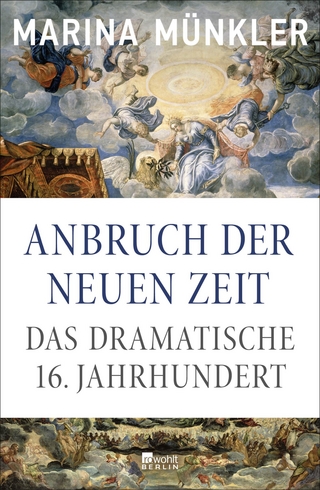
German High Seas Fleet 1914–18
The Kaiser’s challenge to the Royal Navy
Seiten
2023
Osprey Publishing (Verlag)
978-1-4728-5647-0 (ISBN)
Osprey Publishing (Verlag)
978-1-4728-5647-0 (ISBN)
A superbly illustrated new account of how Germany's High Seas Fleet was built, operated and fought, as it challenged the world's most powerful navy in World War I.
Seven years before the outbreak of World War I, the Imperial German Navy rebranded its Home Fleet as the Hochseeflotte, or High Seas Fleet. It was a force designed to take on the Royal Navy, then the world’s most powerful, and for the next four years the North Sea would be their battleground.
Drawing on extensive research, Angus Konstam offers the reader a concise, fully illustrated account of how the entire High Seas Fleet was designed and built, how it operated, and how it fought. The fleet was a modern, balanced force of dreadnought battleships, battlecruisers, cruisers and torpedo boats, using Zeppelins and U-boats for reconnaissance. The ultimate test between them came in May 1916, when they clashed at Jutland.
Packed with spectacular original artwork, maps, 3D diagrams and archive photos, it explains how and why the fleet was built, its role, and how and why it fought as it did. From fighting doctrine and crew training to intelligence, logistics, and gunnery, this book is an essential guide to the Kaiser’s audacious bid for naval glory.
Seven years before the outbreak of World War I, the Imperial German Navy rebranded its Home Fleet as the Hochseeflotte, or High Seas Fleet. It was a force designed to take on the Royal Navy, then the world’s most powerful, and for the next four years the North Sea would be their battleground.
Drawing on extensive research, Angus Konstam offers the reader a concise, fully illustrated account of how the entire High Seas Fleet was designed and built, how it operated, and how it fought. The fleet was a modern, balanced force of dreadnought battleships, battlecruisers, cruisers and torpedo boats, using Zeppelins and U-boats for reconnaissance. The ultimate test between them came in May 1916, when they clashed at Jutland.
Packed with spectacular original artwork, maps, 3D diagrams and archive photos, it explains how and why the fleet was built, its role, and how and why it fought as it did. From fighting doctrine and crew training to intelligence, logistics, and gunnery, this book is an essential guide to the Kaiser’s audacious bid for naval glory.
Angus Konstam has written widely on naval history, but he has long been fascinated by the dreadnought clashes of World War I, and has recently researched and written the acclaimed Jutland 1916: Twelve Hours to Win the War. Now a full-time historian, he was previously a naval officer and a curator in the Royal Armouries, and he is a Fellow of the Royal Historical Society. He lives in Orkney, overlooking Scapa Flow, the graveyard of the High Seas Fleet.
THE FLEET'S PURPOSE
The Kaiser's 'Luxury Fleet'
The Risk Theory
Force Balancing
FLEET FIGHTING POWER
The Ships
Technology
Light Forces
HOW THE FLEET OPERATED
Organization
Command and Control
Communications and Intelligence
Bases and Logistics
COMBAT AND ANALYSIS
The Fleet in Combat
Analysis
FURTHER READING
| Erscheinungsdatum | 19.09.2023 |
|---|---|
| Reihe/Serie | Fleet |
| Illustrationen | Edouard A. Groult |
| Zusatzinfo | Illustrated throughout with at least 40 archive photos and 15 pages of original colour illustrations |
| Sprache | englisch |
| Maße | 184 x 248 mm |
| Themenwelt | Geschichte ► Allgemeine Geschichte ► Neuzeit (bis 1918) |
| Geisteswissenschaften ► Geschichte ► Teilgebiete der Geschichte | |
| Sozialwissenschaften ► Politik / Verwaltung | |
| ISBN-10 | 1-4728-5647-3 / 1472856473 |
| ISBN-13 | 978-1-4728-5647-0 / 9781472856470 |
| Zustand | Neuware |
| Informationen gemäß Produktsicherheitsverordnung (GPSR) | |
| Haben Sie eine Frage zum Produkt? |
Mehr entdecken
aus dem Bereich
aus dem Bereich
Giordano Bruno - ein ketzerisches Leben
Buch | Hardcover (2024)
C.H.Beck (Verlag)
29,90 €
das dramatische 16. Jahrhundert
Buch | Hardcover (2024)
Rowohlt Berlin (Verlag)
34,00 €


